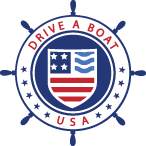Tips and Tricks for Docking Your Boat
Docking a boat can be tricky, and it feels like there is a lot at stake when there are people watching. Drive A Boat USA is here to explain how to dock your boat without injuring yourself or damaging any property.
These tips and tricks will help, but remember that the best way to improve your boat docking skills is through regular practice.
Boat docking basics
Follow these step-by-step instructions to navigate the docking process smoothly:
1. Prepare your boat before approaching the dock
- Adjust your fenders so they are set at the right height to protect your boat from the dock.
- Adjust the bow and stern lines on your boat cleats so you can access them easily when it’s time to tie off.
- If your boat has gates, open them so you have maximum visibility and accessibility during docking.
2. Survey the area
- Check for other boats, obstacles, or hazards that could get in the way or limit the amount of available space to maneuver your boat into the slip or alongside the dock.
- Take note of wind and current direction and strength, as these will affect your approach and maneuverability. You want to have maximum control over your vessel during docking, so that you can gently approach the dock and drift the last few feet into position.
3. Approach the dock
- Approach the dock slowly, never faster than you would want to hit it. Aim for a 45-degree angle as you glide toward the dock. This angle allows for better control when you need to adjust your position. You may have to adjust the angle of your approach depending on wind and water current conditions (see below).
- As you get closer, put the boat in reverse to help align the stern with the dock. Adjust your approach as needed to make a smooth entry.
4. Tie your boat to the dock
- Once alongside, put the boat in neutral and tie off your bow and stern lines to the dock. The type of knot used will depend on the cleats or posts available.
- Keep the engine running while tying off so you can respond quickly to any changes in wind or current that might affect your boat’s position, but make sure you turn it off before anyone disembarks.
Remember, practice is key. Even experienced boaters can make mistakes while docking. It’s a good idea to continually work on your docking technique so you can enjoy a safe and effective docking experience.
Boat docking tips
Boats don’t handle like cars: Remember, your boat will not handle like a motor vehicle. The distance required for your boat to slow to a stop will depend on speed, load, wind and water conditions.
Use your reverse thrust: You can go into reverse as needed to slow down faster and adjust your position when docking, but this takes practice. Learn how your boat handles in a safe area before trying to dock.
Communicate with the people on your boat: If you have passengers or crew, assign roles to make sure everyone knows their responsibilities during the docking process. People who are not involved should remain seated and keep quiet until the boat is docked.
Know your boat: Practice handling your boat so you are familiar with the helm and know exactly how much wheel you need to turn without oversteering. You should also be able to shift in and out of gear without any trouble.
Practice makes perfect: Docking can be challenging, especially in tight spaces or adverse conditions. Regular practice will improve your skills and confidence.
Wind, weather and speed considerations
Docking is easier in perfect weather, and more difficult when there are winds or currents to contend with. Conditions can change while you’re out on the water, so be prepared!
Wind and current
If the wind or current is pushing your boat toward the dock, work with it and approach the dock at a 10-to-20-degree angle, allowing the boat to drift toward the dock.
If wind or current is pushing your boat away from the dock, approach the dock at a manageable speed at an angle of 45 degrees or more. The more powerful the wind or current, the greater the angle at which you should approach the dock.
Winds stronger than 10 knots (12 miles per hour) will create bigger waves, making docking more of a challenge. Always check your local marine forecast or consult the National Weather Service and avoid boating if there is a weather warning or if there is a small craft advisory in effect.
Slow speeds
If you do not have much experience, you might find it difficult to manoeuvre your boat at slow speeds, because boat steering is reduced when moving very slowly or drifting in neutral.
If you are docking a PWC, you will have to keep your engine running to have any steering control at all. If you are driving a boat, you may not always need to be in gear as you approach the dock. Shifting quickly in and out of gear is an important skill for effective docking.
Avoiding injury to person and property while docking
- Passengers and captain should always keep their arms and legs inside the boat.
- Always place your fenders (bumpers) outside your boat before beginning to maneuver.
- Always tie up your boat before allowing anyone to disembark. Be sure to use an appropriate nautical knot.
- If you have any equipment that could get in the way of docking, fall out of the boat or pose a risk to people on or around the boat, make sure it is secured before approaching the dock.
- Always keep a lookout for anyone in the water to avoid propellor strikes.
- Always wear an approved, properly-fitting life jacket when on a boat, even when approaching the dock. It’s the law.
Drive A Boat USA teaches boating safety and issues state-approved boater cards
When you prepare to get your state-approved boating license, you learn all about driving a boat safely and following the law. Find out about everything from boating right-of-way rules, to rules for safe boating with children and how to use diver-down flags.
Boaters in New York, California, Florida and more can earn their license online from Drive A Boat USA!

